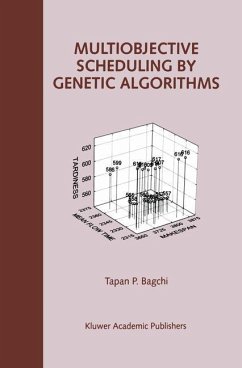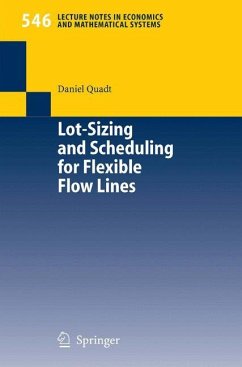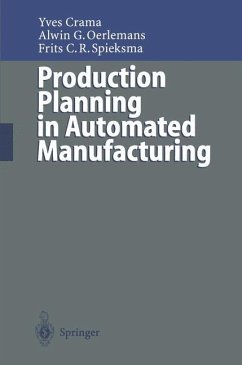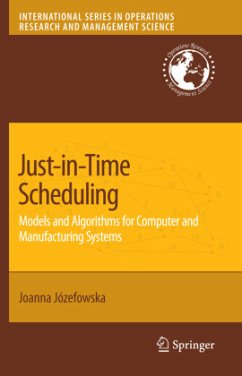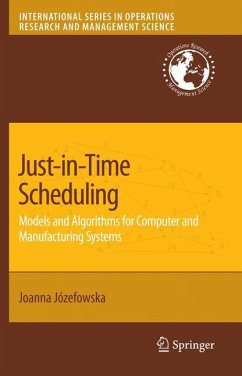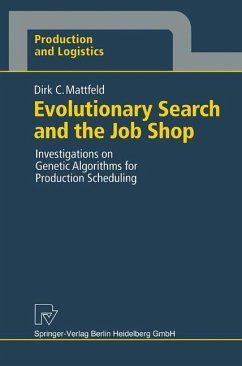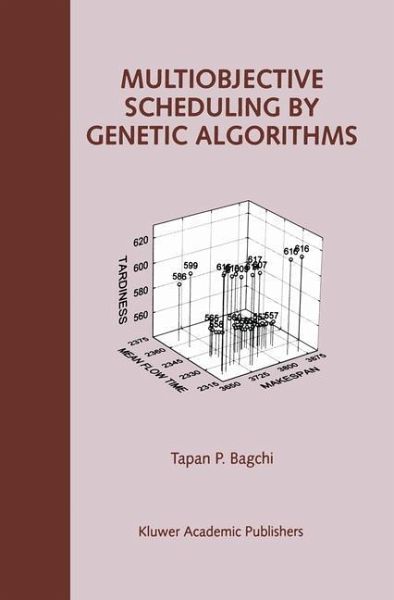
Multiobjective Scheduling by Genetic Algorithms
Versandkostenfrei!
Versandfertig in 1-2 Wochen
153,99 €
inkl. MwSt.
Weitere Ausgaben:

PAYBACK Punkte
77 °P sammeln!
Multiobjective Scheduling by Genetic Algorithms describes methods for developing multiobjective solutions to common production scheduling equations modeling in the literature as flowshops, job shops and open shops. The methodology is metaheuristic, one inspired by how nature has evolved a multitude of coexisting species of living beings on earth. Multiobjective flowshops, job shops and open shops are each highly relevant models in manufacturing, classroom scheduling or automotive assembly, yet for want of sound methods they have remained almost untouched to date. This text shows how methods s...
Multiobjective Scheduling by Genetic Algorithms describes methods for developing multiobjective solutions to common production scheduling equations modeling in the literature as flowshops, job shops and open shops. The methodology is metaheuristic, one inspired by how nature has evolved a multitude of coexisting species of living beings on earth.
Multiobjective flowshops, job shops and open shops are each highly relevant models in manufacturing, classroom scheduling or automotive assembly, yet for want of sound methods they have remained almost untouched to date. This text shows how methods such as Elitist Nondominated Sorting Genetic Algorithm (ENGA) can find a bevy of Pareto optimal solutions for them. Also it accents the value of hybridizing Gas with both solution-generating and solution-improvement methods. It envisions fundamental research into such methods, greatly strengthening the growing reach of metaheuristic methods.
This book is therefore intended for students of industrial engineering, operations research, operations management and computer science, as well as practitioners. It may also assist in the development of efficient shop management software tools for schedulers and production planners who face multiple planning and operating objectives as a matter of course.
Multiobjective flowshops, job shops and open shops are each highly relevant models in manufacturing, classroom scheduling or automotive assembly, yet for want of sound methods they have remained almost untouched to date. This text shows how methods such as Elitist Nondominated Sorting Genetic Algorithm (ENGA) can find a bevy of Pareto optimal solutions for them. Also it accents the value of hybridizing Gas with both solution-generating and solution-improvement methods. It envisions fundamental research into such methods, greatly strengthening the growing reach of metaheuristic methods.
This book is therefore intended for students of industrial engineering, operations research, operations management and computer science, as well as practitioners. It may also assist in the development of efficient shop management software tools for schedulers and production planners who face multiple planning and operating objectives as a matter of course.





